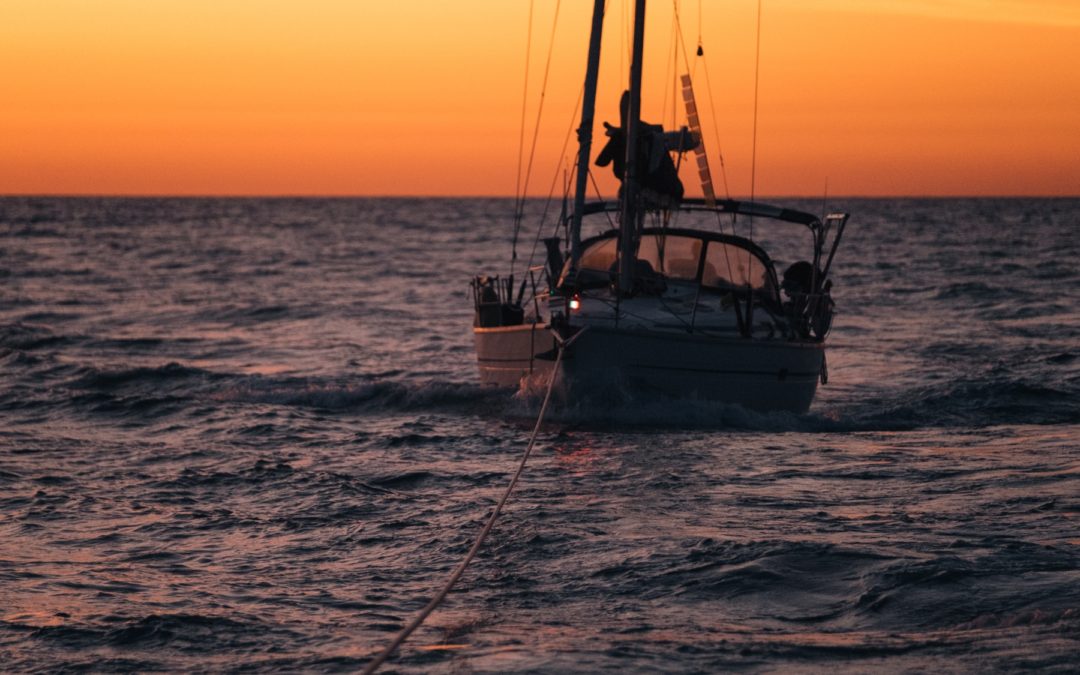Our next destination was Mazatlán, Sinaloa, on Mexico’s mainland coast. With a little over 200 nautical miles to get there, we planned for a full two-day crossing and did all of our due diligence before departing: provisioning and food prep, engine checks, filter changes, weather routing etc.
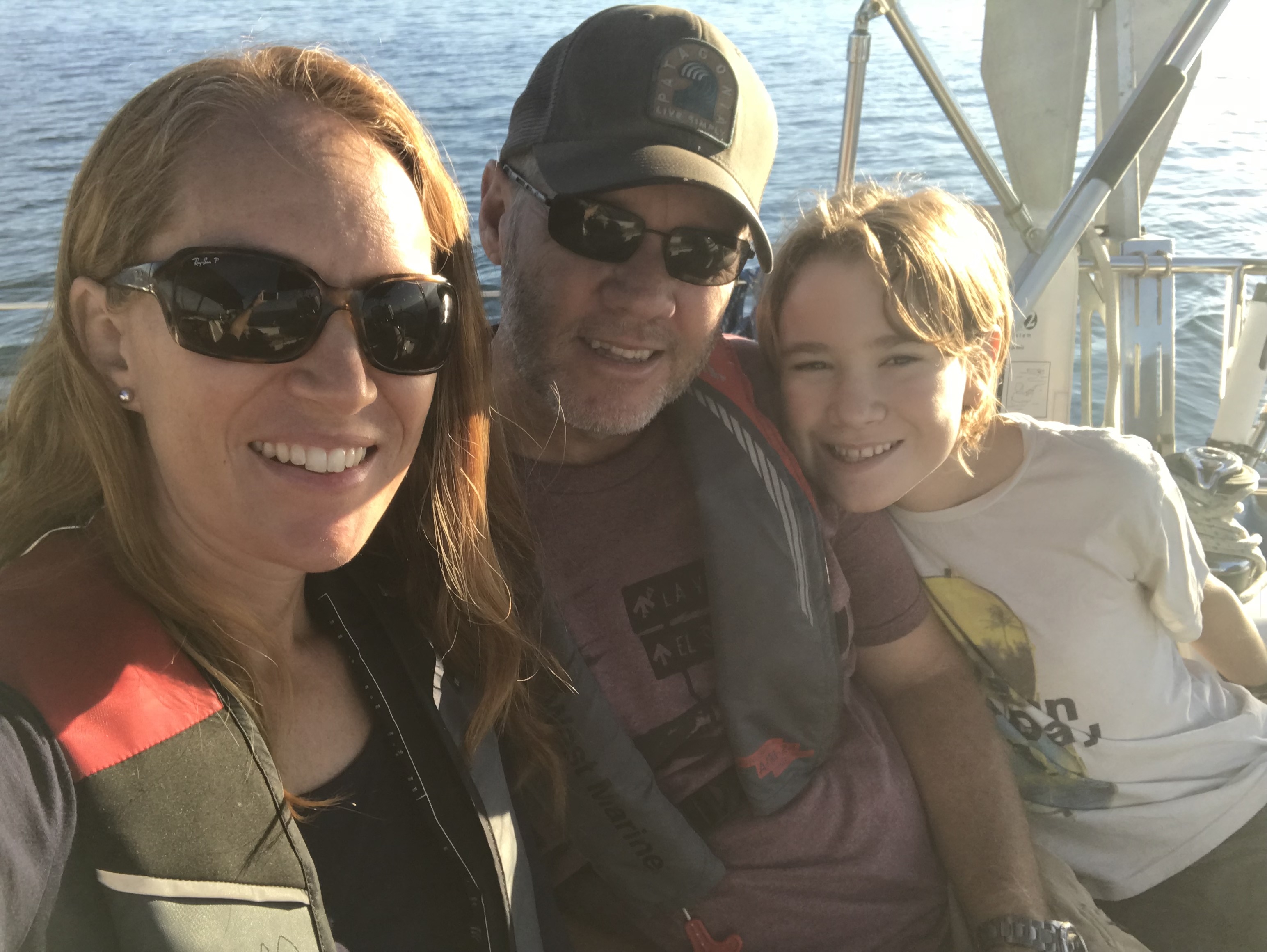
Excited to be on our way to a new city on the mainland of Mexico! Farewell to the Baja!
We picked what we felt would be a good window- light winds and fairly calm seas. We topped up our fuel tank from our jerry cans (through a Baja filter) and headed out at 8:30am into calm conditions. The wind wasn’t supposed to pick up a bit until later in the day, so we were prepared for a calm motoring morning.
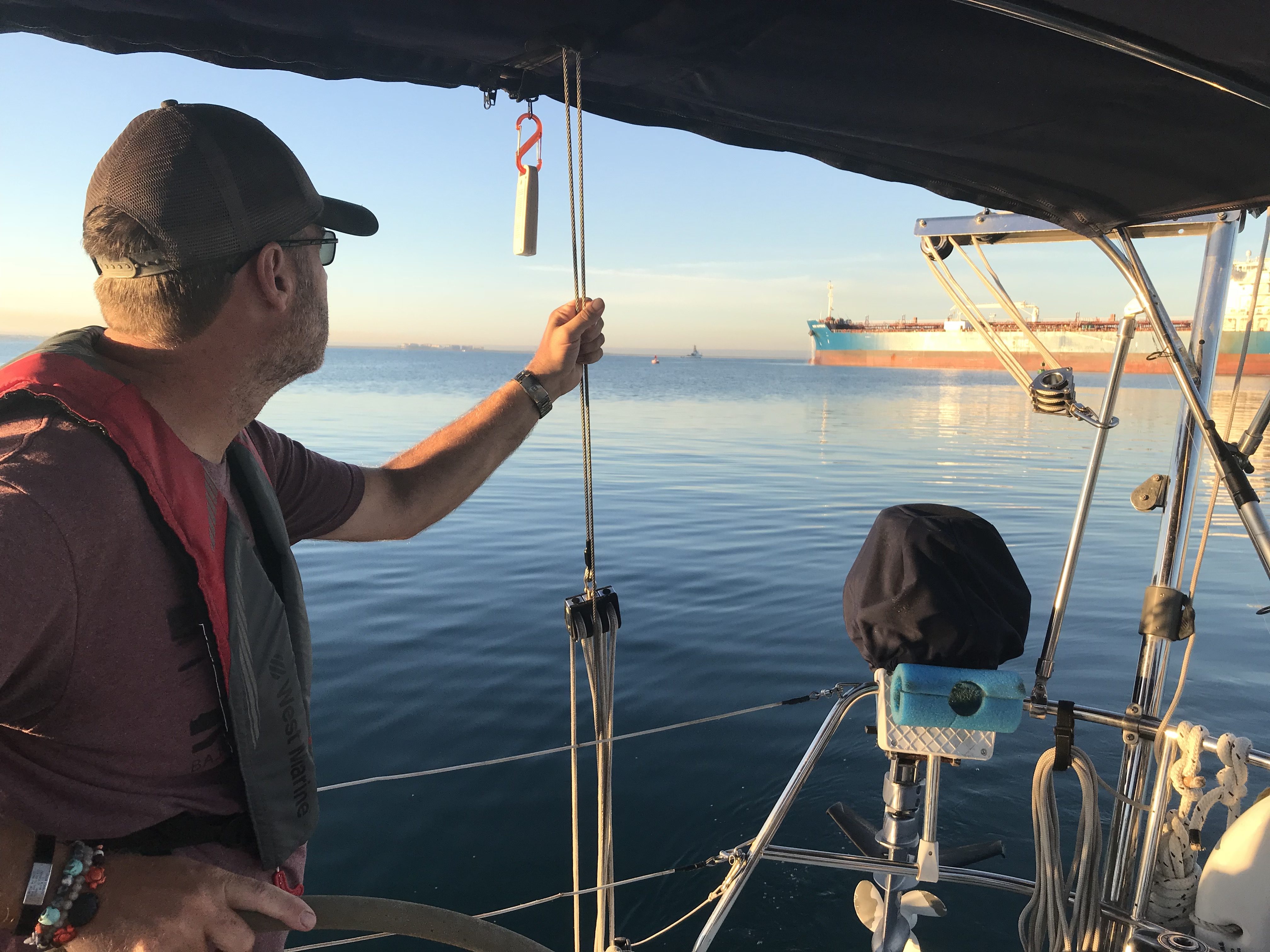
Heading out of the channel with La Paz behind us.
Around 15:30, we were settling in while headed south through Cerralvo Channel. This channel is know for being very sassy (As it was when we went through going north to La Paz. We had 20 knots of wind directly on our nose and big swell, also on our nose- not fun!) so we were happy that it was flat when we were going through.
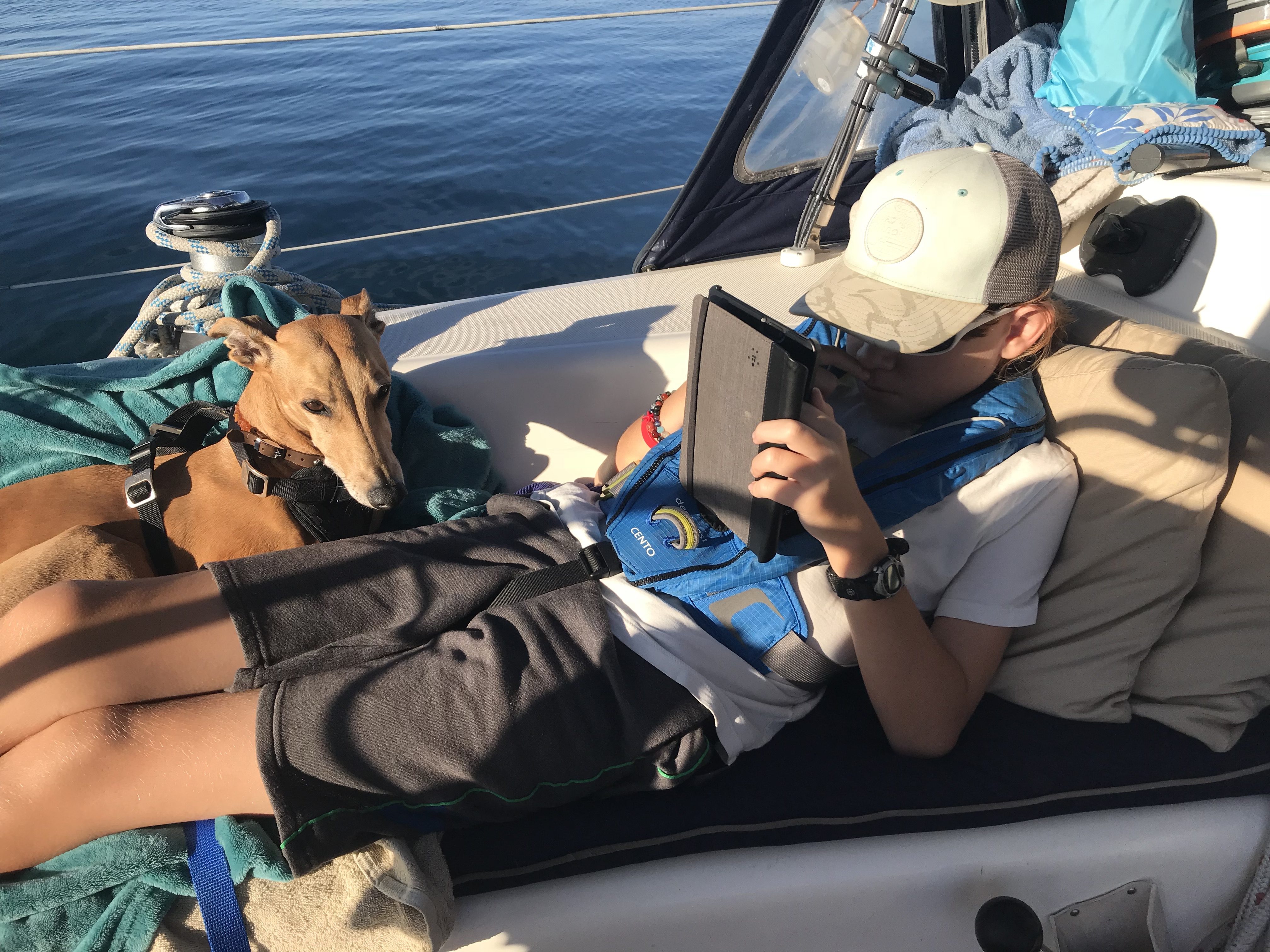
Settling in for a long journey- Carson reading his Kindle and relaxing with Ruby
We were motor-sailing with Lisa at the helm and Jason and Carson down below when suddenly the RPM’s dropped, shot back up and dropped again, then stalled out. We immediately started troubleshooting- was there air in the fuel lines? Jason had just done a filter change of both primary and secondary filters while we were in La Paz, so it was possible that there could be air in the line, although strange as we’d already been motoring for about 7 hours at this point. Jason kept bleeding the lines and trying to get the engine going while Lisa started tacking back north towards the nearest anchorage, should we need more time to figure things out. Then the wind completely died to under 3 knots. We were not making much headway at all- it was likely current pushing us north at 1 knot. The sun was very low in the sky and we were starting to worry about being powerless in the channel in the dark.
Lisa began searching on AIS for other boats nearby for a possible tow or advice. We contacted a catamaran that was just south of us- almost out of the channel. They preferred not to turn around and head back where they’d come from to help us out so they offered advice on a possible anchoring spot. A very small shelf on Cerralvo Island that would be tricky to get into even with propulsion. Going in very close to shore with no power and no wind didn’t seem like a safe or viable option to us, so we kept looking on the AIS for another vessel who could assist.
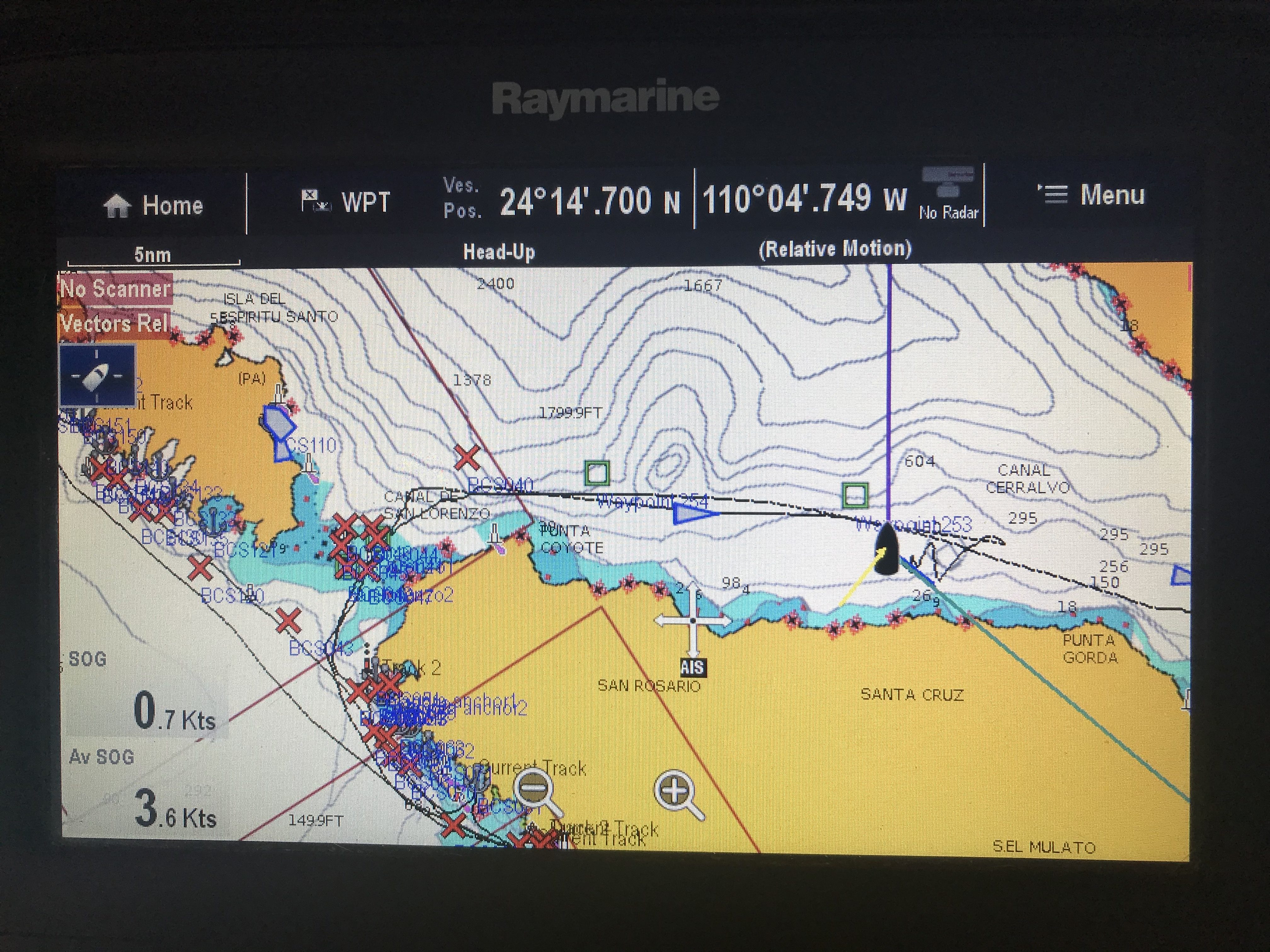
Our location when the engine died- in Cerralvo Channel, several hours south of La Paz with the M/V Farley Mowat heading our way
There! a boat coming south towards us, into the channel! It was the M/V Farley Mowat. A Sea Shepherd boat that we had recently seen anchored near our marina in La Paz. Perhaps they would be able to tow us to a safe anchorage!
Lisa hopped on the radio. “Farley Mowat, Farley Mowat, this is Bloom”. The former US Coast Guard cutter was quick to respond and listened intently to our situation. They asked us what our destination was, and when we responded, “Mazatlán”, asked us to hold for a few minutes so they could discuss the situation with the vessel’s captain.
“Bloom, Bloom, this is the Farley Mowat. It is your lucky day! We are also going to Mazatlán!”.
<insert radio silence here>
“Farley Mowat, do you mean that you are going to tow us all the way to Mazatlán, over 200 nautical miles?”
“Bloom- like we said, it is your lucky day!”.
Wow. This was surreal! We also had to kick it into high gear as the Farley Mowat was due to arrive at our boat within about 20 minutes. We had to get tow lines ready and get ourselves organized for what was to come. The Sea Shepherd crew onboard were so professional, calm and organized. With some tossing of lines and rigging of a tow system up on our bow, we were ready to get underway.
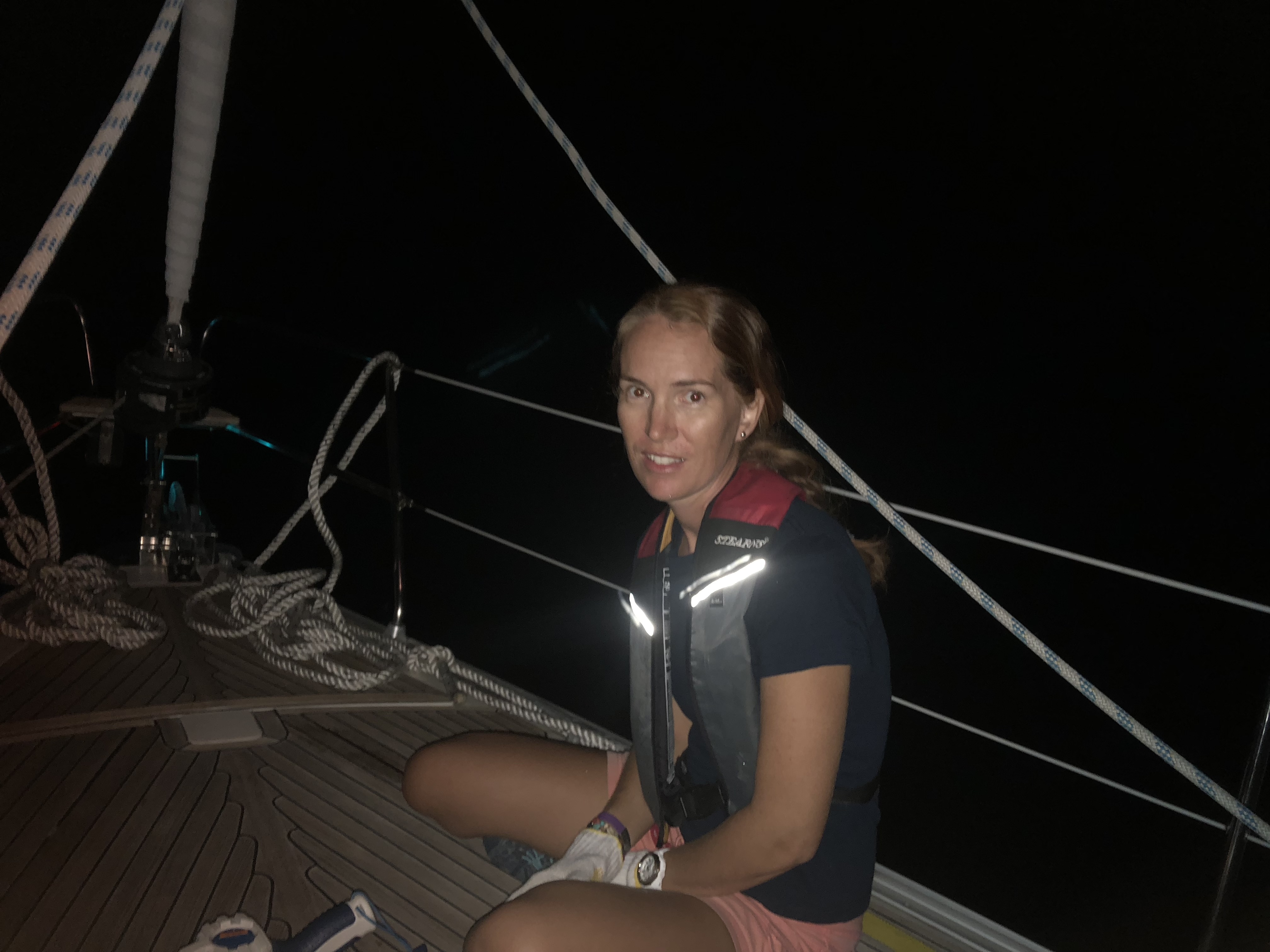
Lisa on the bow, rigging the tow lines for Sea Shepherd to hook through- If she looks a little freaked out, it is because she is!
The next hurdle was the fact that as an ex-Coast Guard boat, the M/V Farley Mowat likes to cruise at 10.5 knots. Bloom’s hull speed is 8 knots. This means that our entire back transom was a couple of feet under the water. It also meant hand steering with intense concentration; due to the speed, but also due to the fact that the Mowat was towing a panga off her aft port quarter that would flip if our tow line crossed it. The original plan with our two day and one night crossing was to have Carson, our 11-year-old son help with some of the night watch shifts. Our new setup meant that the steering was too intense for him, so would have to be shared between Captain and Co-Captain.
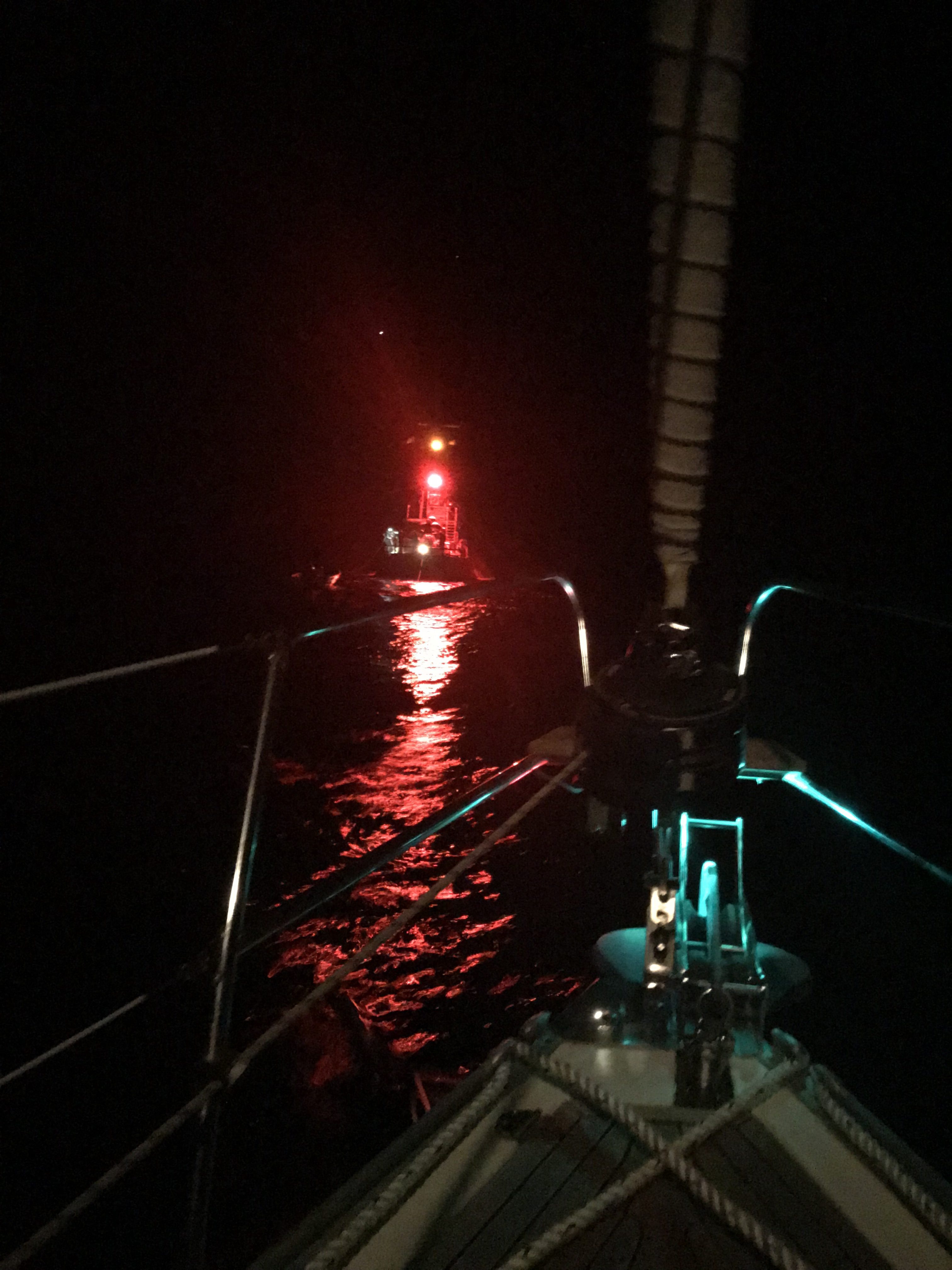
Underway, being towed by Sea Shepherd’s M/V Farley Mowat out of Cerralvo Channel
After a few hours, we were well clear of Cerralvo Channel and were well into the open water crossing portion of the journey. We were starting to feel the burn out and still had a long way to go. Discussions amongst the crew ended in a decision to advise the Sea Shepherd team that we couldn’t continue at this speed and as we were safely out of the channel, we could detach from their tow line and hope for wind to get to Mazatlán. Captain Brian was adamant that they see us arrive safely and asked what the maximum speed would be comfortable with (Seriously!? How nice are these people!?) We let him know that around 8 knots would be much better for us so he offered to try it out and see how it goes- we’d touch base in the morning. We found this speed to be much more manageable, but still pretty exhausting. We were really looking forward to reaching Mazatlán at this point!
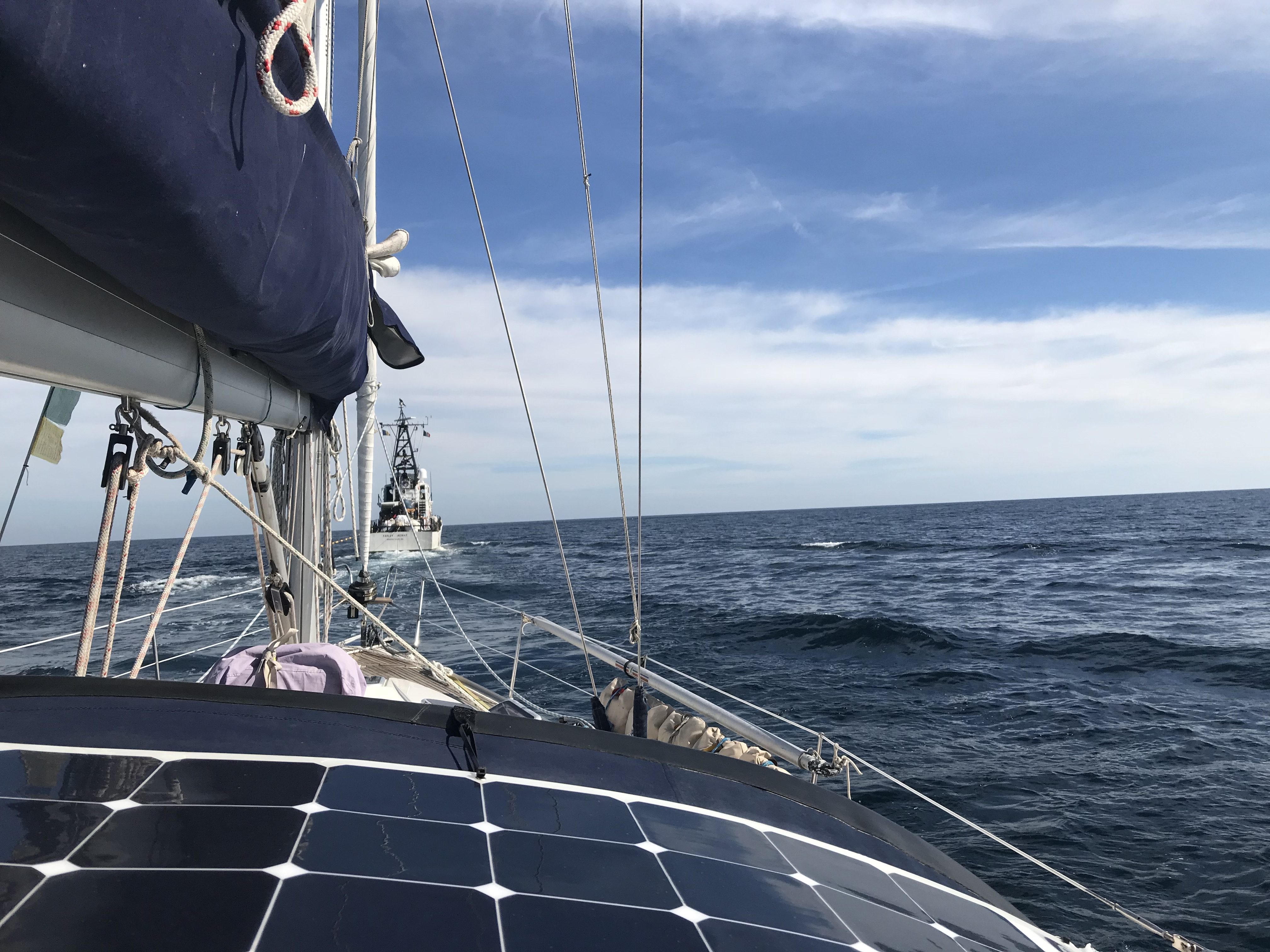
Early the next morning- still getting pulled along by our new friends!
After a mostly sleepless night, we heard from the Farley Mowat in the morning who so-overly-graciously asked us if we’d like them to send back their Engineer and his assistant in their panga to troubleshoot our engine along with a crew member who was also a sailor to let us get a break at the wheel for a little while (I know, right?!) We were thrilled to accept their offer and helped their crew members climb aboard Bloom. After a couple of hours of troubleshooting and a much needed break at the helm, it was determined that Bloom’s engine needed to be assessed at a marina by a mechanic and the injectors were suspect.
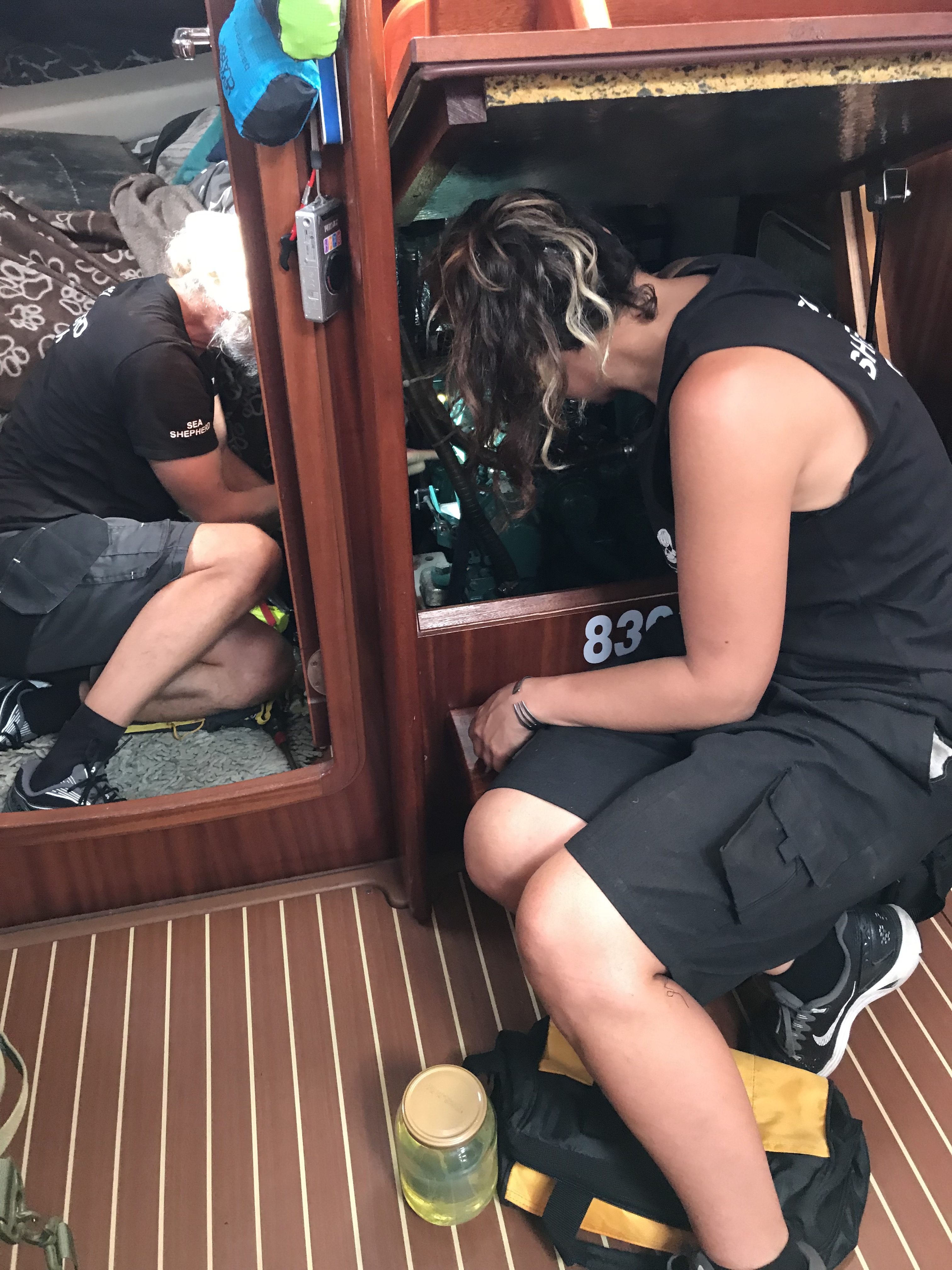
The Sea Shepherd Engineer & Assistant, trying to get Bloom’s engine working
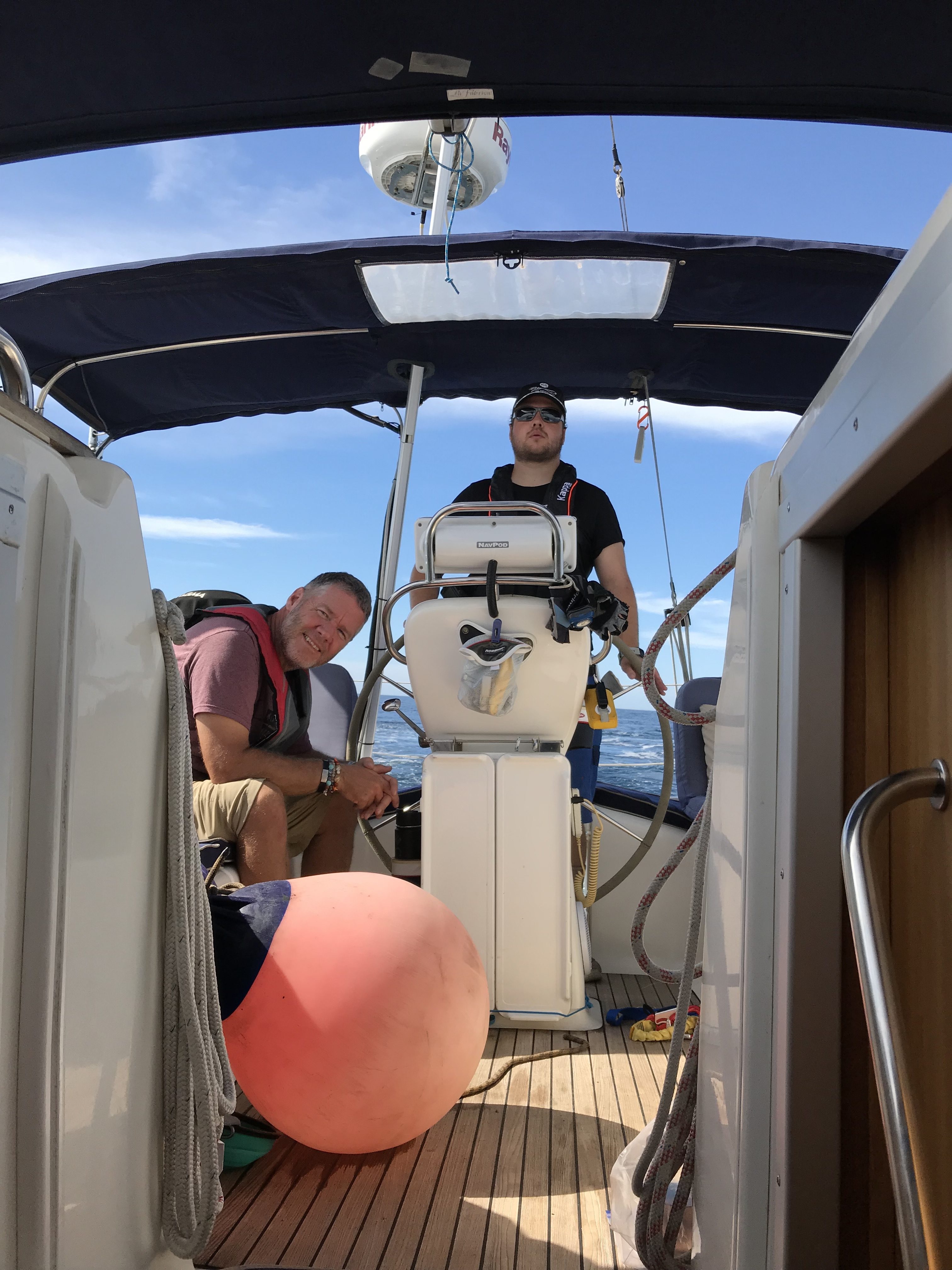
The sailor onboard the Farley Mowat came to help Bloom steer for a while! Here he is chatting with Jason while he has a rest.
The tow was continuing to go well and it was decided to tow us all the way to Club Nautico, the anchorage at Mazatlán’s commercial port. From there, we’d arrange a tow into the marina the next morning. Before the Shepherd crew panga’d back to their ship, we were blessed by an amazing show of hundreds and hundreds of spinner dolphins! What wonderful company to share this experience with.
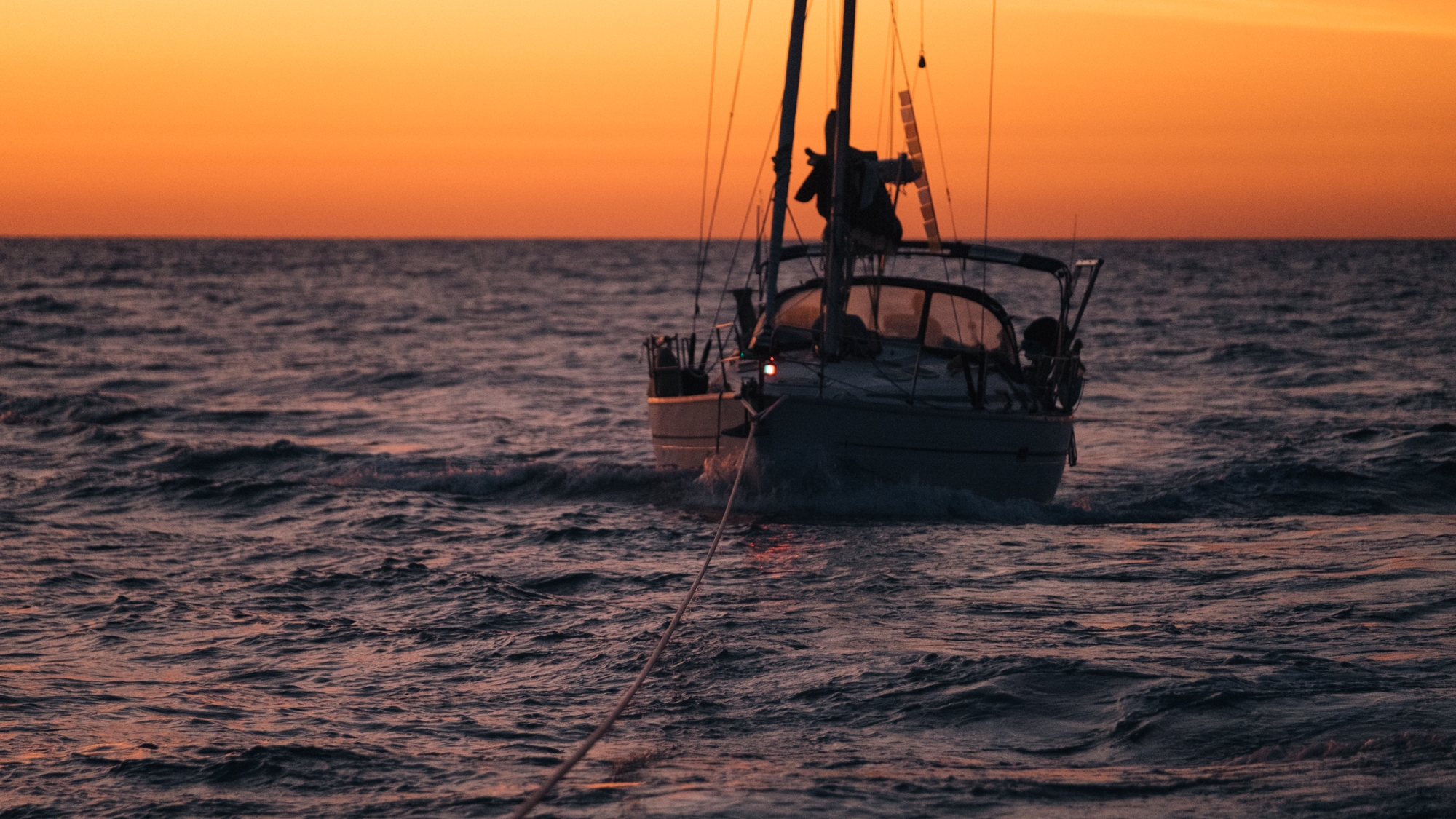
Bloom in tow at sundown- the final leg of the journey (photo courtesy of Sea Shepherd crew member)
We arrived at the anchorage at about 23:00 and were exhausted at this point. We rafted up beside their 125 foot ship and used what little fumes we had left to accept the honor of a visit onboard the M/V Farley Mowat to meet the crew and express our gratitude to all onboard.

Rafted up to the M/V Farley Mowat at the Club Nautico anchorage at Stone Island, Mazatlán
Carson got his Encyclopedia of Marine Mammals of the World signed by the crew and lots of hugs went around. We toured their amazing vessel and were sad to wave goodbye to our new friends and saviours the next morning as we got towed away to the closest marina. To read more about what the problem was and how we fixed it, read 14 Months With Engine Issues…..You Won’t Believe What the Problem Was

Farewell to our new friends, the crew of the M/V Farley Mowat. Thanks guys!
If you aren’t familiar with Sea Shepherd and their efforts- their job is not saving people at sea, but sea life. Sea Shepherd is a worldwide, non-profit organization that focuses on marine wildlife conservation. They are currently in the Sea of Cortez for ‘Operation Milagro’ in which they are trying to save the extremely endangered Vaquita dolphins in the Northern section of the Sea. Sea Shepherd’s crews consist of almost all volunteers (only the Captain and Engineer receive compensation) which makes this team even more amazing. The compassion and care shown by their phenomenal team was second to none.
This was a once-in-a lifetime experience that we will never forget. We are forever grateful to them for their devotion to helping all those on the ocean and are donating monthly to them to continue to support their amazing efforts. If you would like to support Sea Shepherd, you can donate here or volunteer here.

